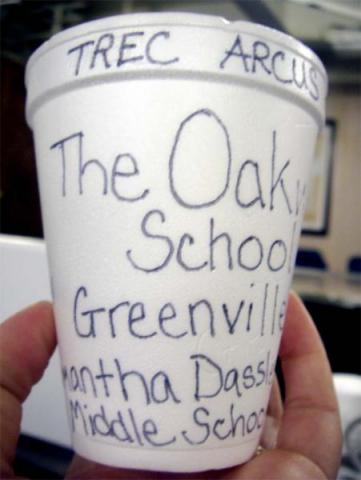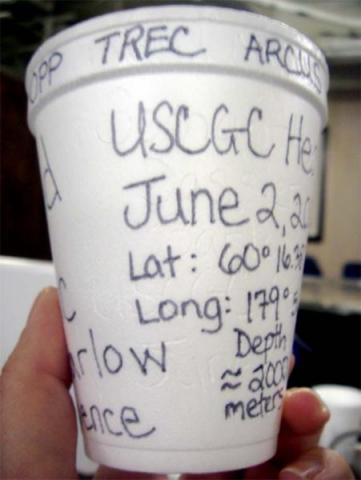( Log In ) Log In is for TREC Teachers & Researchers only
  |
| Samantha_Dassler_Barlow |
 Jun 2 2006, 09:17 PM Jun 2 2006, 09:17 PM
Post
#1
|
 Advanced Member    Group: TREC Team Posts: 99 Joined: 12-April 06 Member No.: 23 |
Date: Thursday, June 1, 2006
GPS Coordinates Latitude: 62° 32.8 N Longitude: 174° 37.2 W  Can you tell the difference between the shallow water on the continental shelf and the deep water of the basin? The lighter blue means shallower water and the darker blue means deeper water.  We are almost finished reoccupying stations south of St. Lawrence Island and now we are working on a transect out towards deeper water on the edge of the shelf before we head back to Dutch Harbor. Maybe you have noticed the lighter blue on the maps in the northern part of the Bering Sea up where our stations are and the darker blue down towards the Aleutian Islands in the southern part of the Bering Sea. The lighter blue is part of the continental shelf where it is shallow, around 30 to 80 meters. The darker blue, southern part of the Bering Sea is deep, around 3000 meters. After finishing some sampling at a few of the stations south of St. Lawrence Island that we have already been to, we will begin heading out towards the edge of the continental shelf. On the map, that is where you see the blue get much darker and the slope goes from a gradual downhill slant to a steep drop off. We will begin sampling on the edge of that shelf in water that is around 2000 meters deep. What do you think the water profile will be like when the scientists send down the CTD? Will the amount of salt increase or decrease with depth? What about the amount of chlorophyll in the water? We are also doing an experiment with polystyrene cups (Styrofoam). Well, it is more like making our own souvenirs than an experiment. A lot of people have decorated a small polystyrene cup with permanent marker. We will put them in a bag attached to the CTD and the bag will go down, under the water with the CTD. What do you think will happen, if anything at all, to the cups as the depth of the water increases? Make a hypothesis an educated guess as to what you think the cup will look like when it is brought back up to the surface and why you think so. Will it expand? Will it shrink? Will it get implode? Will it explode? Will it stay the same? Will it do something else? Many of you might already know what will happen to the cup from experience. So, my challenge to you then, is to see if you can explain why that outcome happens. Here are some pictures of the cup that I will be sending down with the CTD tomorrow.  6/1/06 Mrs. Barlow poses with her cup before it is sent down to 2000 meters with the CTD.  6/1/06 I have decorated my cup with a permanent marker. There is something novel about being able to say that your name has been down, that far, under the ocean.  6/1/06 Yet another view of my beautiful cup, with as much information as I could possibly write on it.  6/1/06 I wanted you to see all the decorations of my cup before I put it in the water. I am afraid it will never look the same again |
  |
2 User(s) are reading this topic (2 Guests and 0 Anonymous Users)
0 Members:

|
NSF Acknowledgment & Disclaimer | Time is now: 16th November 2024 - 01:07 PM |
Invision Power Board
v2.1.7 © 2024 IPS, Inc.








